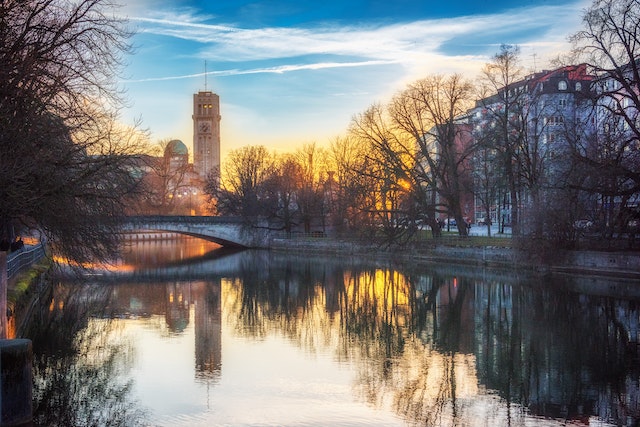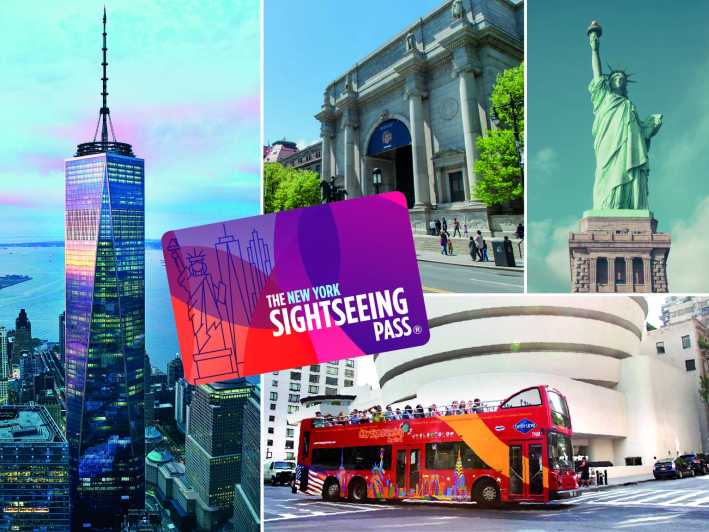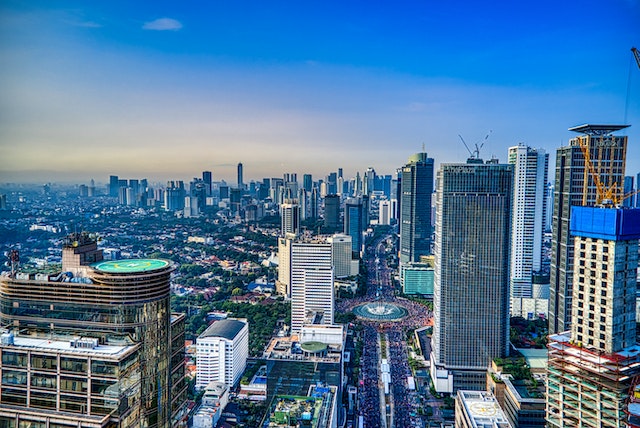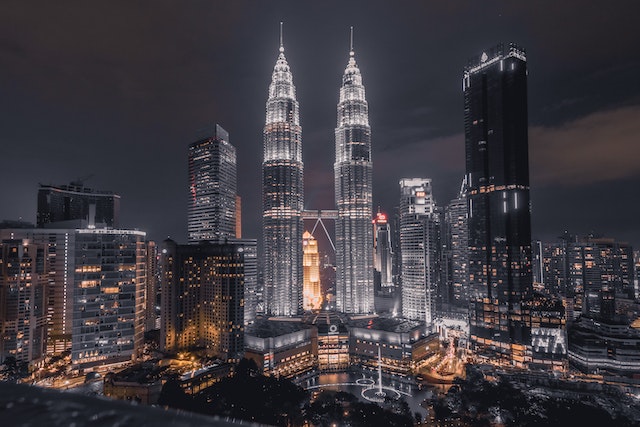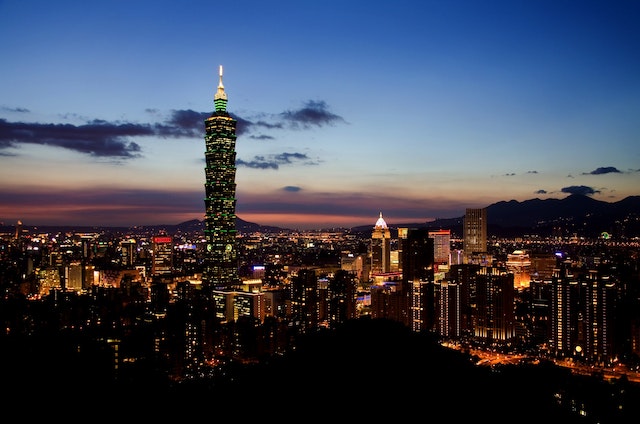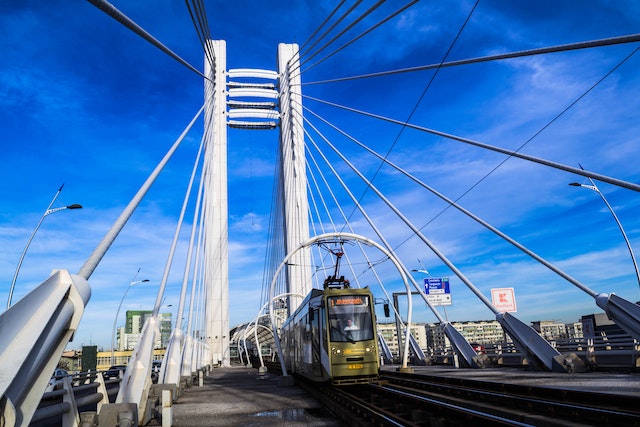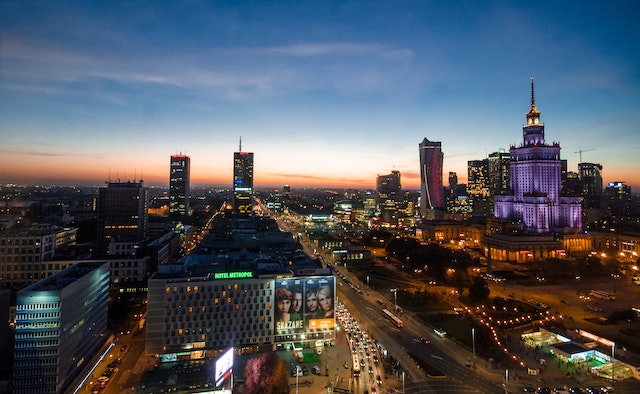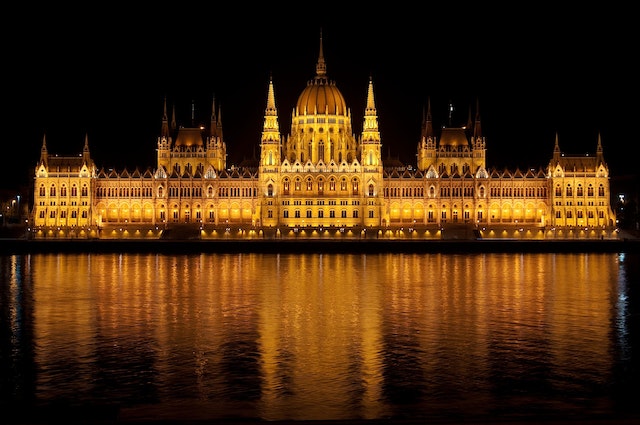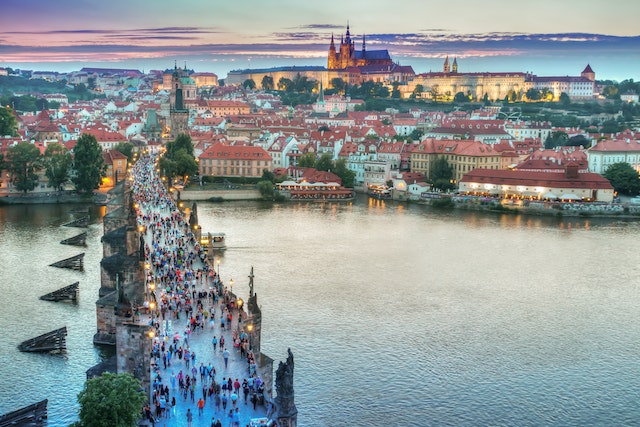Welcome to a captivating journey through the heart of Munich, Germany – a city that effortlessly blends its rich history with modern vibrancy. Nestled in the heart of Bavaria, Munich stands as a treasure trove of culture, art, and gastronomy, enticing travelers from around the globe.
With its iconic architecture, lush green spaces, and a palpable sense of tradition, Munich casts a spell on visitors, inviting them to explore its charming streets and delve into its storied past. From the grandeur of Nymphenburg Palace to the lively atmosphere of Marienplatz, every corner of this dynamic city offers something to captivate the soul.
B. Purpose of the Travel Literary
The purpose of this travel literary is to embark on a journey through the wonders of Munich, discovering the city’s hidden gems, indulging in its culinary delights, and immersing ourselves in its rich cultural tapestry. As we traverse through the pages of this narrative, we’ll uncover essential travel tips, unveil lesser-known attractions, and celebrate the spirit of Munich’s local life.
Whether you’re a history enthusiast, a food lover, or simply seeking to be enchanted by the magic of this vibrant metropolis, this travel literary promises to be your faithful companion. Join us as we traverse through the cobbled streets, experience the warmth of Bavarian hospitality, and uncover the essence of Munich, a city that beckons with open arms to leave an indelible mark on your heart.
Preparations
A. Choosing the Best Airline
- Comparative Analysis of Airlines Flying from Atlanta to Munich
As we begin our preparations for the journey to Munich, Germany, selecting the best airline is of utmost importance to ensure a smooth and enjoyable travel experience. We embark on a comparative analysis of airlines offering flights from Atlanta to Munich, considering various factors that influence our decision.
We’ll examine flight schedules, travel durations, and layover options to find the most convenient and efficient routes. Additionally, we’ll explore in-flight amenities, seating options, and customer reviews to gauge the level of comfort and service provided by each airline.
- Recommendation: Lufthansa – Reasons and Perks
Based on our analysis, Lufthansa emerges as a top recommendation for flying from Atlanta to Munich. Here are the compelling reasons and perks that make Lufthansa stand out:
a. Extensive Route Network: Lufthansa boasts a comprehensive network, offering frequent and direct flights from Atlanta to Munich. This ensures flexibility in choosing suitable departure times to match our travel plans.
b. Comfortable Flying Experience: Lufthansa’s long-standing reputation for excellence in service and comfort reflects in its spacious seating, ergonomic design, and in-flight entertainment options, ensuring a pleasant journey.
c. Onboard Amenities: With complimentary meals and beverages, including fine wines and spirits, Lufthansa pampers passengers with a taste of Bavarian and international cuisine, creating a delightful culinary experience.
d. Miles & More Program: Lufthansa’s frequent flyer program, Miles & More, allows travelers to earn miles for future benefits, such as upgrades and discounted flights, adding extra value to our journey.
e. Quality Service: Lufthansa’s friendly and attentive cabin crew are known for their professionalism and dedication, making the travel experience more enjoyable and stress-free.
f. Efficient Layovers: When layovers are necessary, Lufthansa’s well-planned connections and efficient transit services ensure smooth transitions between flights.
In conclusion, choosing Lufthansa as our airline of choice promises a superior travel experience with its exceptional service, comfort, and well-connected routes. With Lufthansa, our journey to Munich begins on a high note, setting the stage for an unforgettable adventure in the heart of Germany.
B. Best Day of the Week to Travel
- Discussing Advantages of Traveling on Weekdays vs. Weekends
As we plan our journey to Munich, Germany, the day of the week we choose to travel can significantly impact our overall experience. Traveling on weekdays, typically from Monday to Thursday, offers several advantages compared to weekends (Friday to Sunday).
a. Cost Savings: Weekday flights often come with more competitive ticket prices, as demand is relatively lower compared to weekends when more leisure travelers are on the move. Opting for a weekday departure can help us save on airfare and allocate those funds to other aspects of our trip.
b. Fewer Crowds: Airports and flights on weekdays generally see fewer travelers, resulting in less congestion and shorter lines during check-in, security, and boarding processes. This leads to a smoother and more relaxed travel experience.
c. Better Accommodation Availability: Choosing to travel mid-week can also increase the likelihood of finding preferred accommodations, as hotels and vacation rentals tend to have more availability during weekdays.
- Suggestion: Departure on a Tuesday or Wednesday
Based on the advantages discussed above, departing for Munich on a Tuesday or Wednesday emerges as a favorable choice for our travel plans.
Traveling on a Tuesday or Wednesday not only offers the benefits of cost savings and reduced crowds but also allows us to optimize our itinerary. Arriving in Munich mid-week allows us to explore the city’s attractions with ease, as weekdays may have shorter lines at popular sites and museums, enabling us to make the most of our time.
Additionally, beginning our adventure on a Tuesday or Wednesday provides an ideal balance between weekdays and weekends during our trip. We can enjoy quieter weekdays for exploring and experiencing the city’s local life, while weekends offer opportunities to participate in cultural events and weekend markets, adding depth to our overall Munich experience.
In conclusion, departing for Munich on a Tuesday or Wednesday ensures a pleasant and well-balanced travel experience, optimizing our time and allowing us to delve into the magic of this captivating city. As we set out on our journey, we can look forward to embracing the charm of Munich, Germany, with excitement and anticipation.
C. Busy Times and Off-Peak Seasons
- High Season vs. Low Season in Munich
As we prepare for our journey to Munich, it’s essential to consider the city’s high season and low season, as they can significantly impact our travel experience.
a. High Season: The high season in Munich typically occurs during the summer months, from June to August. During this period, the city attracts a considerable number of tourists, drawn by the pleasant weather, outdoor festivals, and cultural events. While the vibrant atmosphere and long daylight hours make it an appealing time to visit, it also means larger crowds, longer lines at popular attractions, and potentially higher accommodation and dining costs.
b. Low Season: The low season in Munich falls during the winter months, from December to February. The colder weather and shorter days deter many tourists, resulting in fewer crowds and more relaxed experiences at tourist sites. Additionally, hotels and airlines often offer attractive discounts during this period, making it a budget-friendly option for travelers.
- Timing the Trip for a Less Crowded Experience
To avoid the peak crowds and enjoy a more tranquil experience in Munich, planning our trip during the shoulder seasons can be a wise choice. The shoulder seasons, which are the months of April to May and September to October, offer a perfect blend of pleasant weather and reduced tourist numbers.
Visiting Munich during the shoulder seasons allows us to explore the city’s iconic landmarks and immerse ourselves in its culture without the overwhelming crowds of high season. Furthermore, it offers a chance to witness the blooming of spring flowers or the stunning autumn foliage, adding natural beauty to our journey.
By timing our trip during the shoulder seasons, we strike a balance between favorable weather conditions and a more peaceful travel experience. This allows us to fully embrace the charm of Munich, savor its local offerings, and create cherished memories in this enchanting city without the crowds that come with peak tourist periods.
In conclusion, being mindful of Munich’s high season and low season allows us to make informed decisions about the best time to travel. Opting for the shoulder seasons offers an opportunity to enjoy the best of both worlds – delightful weather and a less crowded experience – ensuring that our journey to Munich is a truly memorable and enjoyable one.
D. Layovers and Travel Time
- Direct Flights vs. Layovers
As we plan our trip to Munich, Germany, we must consider whether to opt for direct flights or flights with layovers. Both options come with their pros and cons, and choosing the right one depends on our preferences, budget, and travel priorities.
a. Direct Flights: Direct flights offer the most straightforward and time-efficient travel experience. They involve a non-stop journey from Atlanta to Munich, eliminating the need for a layover. Direct flights are ideal for travelers seeking a seamless journey with no interruptions and the quickest route to their destination. While direct flights may sometimes be slightly more expensive, they save us time and provide added convenience, especially for short trips.
b. Flights with Layovers: Flights with layovers can be more budget-friendly, and they provide an opportunity to explore another city during the stopover. Layovers can range from a couple of hours to several hours, depending on the airline and route. While layovers extend travel time, they can also break up a long journey and provide a chance to stretch our legs and experience a different airport or city along the way.
- Optimal Layover Duration and Preferred Airport for a Smooth Journey
For those considering flights with layovers, finding an optimal layover duration is crucial to ensure a smooth and stress-free journey. An ideal layover duration typically ranges from one to three hours, as it allows enough time for a comfortable transit without excessive waiting.
When choosing a layover airport, factors such as airport facilities, efficiency, and proximity to our destination play a significant role. Airports with excellent amenities, such as lounges, restaurants, and shops, can make the layover more enjoyable. Additionally, airports with shorter walking distances and efficient transit services minimize the time spent between flights.
Frankfurt Airport (FRA) and Amsterdam Airport Schiphol (AMS) are popular choices for layovers when flying from Atlanta to Munich. Both airports are well-connected, offer modern facilities, and have reputable airlines with efficient transit services. Furthermore, their central European locations make them convenient hubs for connecting flights to Munich.
By carefully considering our layover duration and choosing a preferred airport, we can optimize our travel time and make the layover experience an enjoyable part of our journey to Munich. Whether we choose direct flights for a swift journey or flights with layovers to explore new places, planning for a seamless travel experience ensures that our adventure to Munich begins on a positive note.
Itinerary: 5-7 Days in Munich
A. Day 1: Arrival in Munich
Welcome to Munich, Germany! As we arrive in this vibrant city, we’ll immediately be swept away by its captivating atmosphere and rich cultural heritage. Day 1 sets the stage for an unforgettable adventure, allowing us to explore some of Munich’s most iconic landmarks and immerse ourselves in its unique charm.
Upon arrival, we’ll check into our accommodation and take a moment to freshen up and rest after the journey. Once rejuvenated, we’ll set out to soak in the vibrant atmosphere of Munich’s city center.
- Recommended Places to Visit on the First Day
a. Marienplatz: Our first stop will be Marienplatz, the beating heart of Munich. This bustling square is surrounded by stunning architecture, including the iconic New Town Hall (Neues Rathaus) with its charming Glockenspiel. We’ll be mesmerized by the spectacle as the Glockenspiel comes to life, depicting stories from Munich’s history.
b. Viktualienmarkt: Just a short stroll from Marienplatz, we’ll find Viktualienmarkt, a delightful food market offering a vast array of fresh produce, Bavarian specialties, and artisanal products. It’s an ideal spot to indulge in local treats and soak in the authentic Bavarian ambiance.
c. Frauenkirche: No visit to Munich is complete without witnessing the twin towers of Frauenkirche, the city’s iconic Gothic cathedral. Its distinctive architecture and serene interior make it a must-visit historical site.
d. Englischer Garten: To unwind and connect with nature, we’ll head to Englischer Garten, one of the largest urban parks in the world. Here, we can enjoy leisurely walks, relax by the serene lakes, and even watch surfers take on the Eisbachwelle wave.
e. Hofbräuhaus: As the evening approaches, we’ll end our day at the world-famous Hofbräuhaus, a historic beer hall renowned for its lively atmosphere and traditional Bavarian music. We’ll savor authentic beer and classic Bavarian dishes while mingling with locals and fellow travelers.
Day 1 in Munich promises an exciting introduction to the city’s cultural highlights and sets the tone for an adventure filled with history, cuisine, and exploration. As the sun sets on this memorable day, we’ll eagerly anticipate what the next days in Munich have in store for us.
B. Day 2: Exploring Historic Landmarks
On Day 2 of our Munich adventure, we’ll delve deeper into the city’s rich history and architecture, immersing ourselves in the grandeur of iconic landmarks and embracing the cultural heritage that makes Munich truly captivating.
- Visiting Iconic Landmarks such as Marienplatz and Nymphenburg Palace
a. Marienplatz: We’ll begin our day by returning to Marienplatz to fully appreciate its splendor during the daylight. We can explore the surrounding streets and perhaps catch a glimpse of street performers adding to the vibrant atmosphere.
b. Frauenkirche: We’ll head to Frauenkirche once again, this time during the day, to admire its awe-inspiring Gothic architecture up close. The church’s twin towers and cavernous interior make it a striking representation of Munich’s spiritual and cultural history.
c. Residenz München: Next, we’ll visit Residenz München, the former royal palace of Bavarian rulers. This magnificent complex boasts opulent rooms, courtyards, and gardens, reflecting centuries of royalty and cultural influences.
d. Nymphenburg Palace: Our journey continues to Nymphenburg Palace, an enchanting baroque palace surrounded by beautifully landscaped gardens and serene lakes. We’ll stroll through its grand halls, learn about Bavarian royalty, and revel in the architectural brilliance of this exquisite residence.
- Experiencing Munich’s Rich History and Architecture
a. Odeonsplatz: A short walk from Residenz München leads us to Odeonsplatz, an elegant square steeped in history. We’ll witness the beauty of Theatinerkirche and the Feldherrnhalle, where significant events in Bavarian history have unfolded.
b. Theatine Church: Admiring the Theatinerkirche’s striking yellow facade and magnificent dome, we’ll step inside to marvel at its Baroque interiors, complete with ornate altars and beautiful frescoes.
c. Asamkirche: Our historic tour takes us to Asamkirche, a hidden gem known for its remarkable architecture and exquisite Rococo design. The church’s facade is unassuming, making the interior’s opulence all the more surprising.
d. Sendlinger Tor: To round off our exploration of Munich’s history, we’ll visit the Sendlinger Tor, a well-preserved city gate that once formed part of the city’s fortifications. This historic landmark stands as a reminder of Munich’s past as a medieval city.
Day 2 in Munich immerses us in the city’s captivating history and architectural wonders. From the grandeur of Nymphenburg Palace to the hidden gems of Asamkirche, we’ll be enchanted by Munich’s rich cultural heritage and emerge with a deeper appreciation for this remarkable city.
C. Day 3: Embracing Bavarian Nature
On Day 3 of our Munich journey, we’ll leave the urban charms behind and venture into the mesmerizing landscapes of Bavarian nature. This day will be dedicated to a memorable day trip to either the Bavarian Alps or the enchanting Neuschwanstein Castle, where breathtaking vistas and natural wonders await.
- A Day Trip to Bavarian Alps or Neuschwanstein Castle
a. Bavarian Alps: For nature enthusiasts and outdoor lovers, a day trip to the Bavarian Alps promises a thrilling experience. We’ll embark on a scenic drive through picturesque Bavarian villages, passing lush meadows, and making our way into the majestic mountains. Our destination could be the Zugspitze, the highest peak in Germany, where we’ll take a cable car or cogwheel train ride to the summit for stunning panoramic views. Alternatively, we might explore the stunning Lake Eibsee, surrounded by snow-capped peaks and crystal-clear waters.
b. Neuschwanstein Castle: Alternatively, we can choose to immerse ourselves in fairytale charm by visiting Neuschwanstein Castle, the iconic palace that inspired Disney’s Sleeping Beauty Castle. Nestled in the Bavarian Alps, this masterpiece of Romanesque Revival architecture captivates visitors with its dreamlike setting and stunning views. We’ll tour the castle’s richly decorated rooms and explore the surrounding Hohenschwangau village for a magical day.
- Delighting in the Breathtaking Landscapes of the Region
a. Alpine Scenery: Whether we venture to the Bavarian Alps or Neuschwanstein Castle, we’ll be greeted by awe-inspiring alpine scenery. Snow-capped peaks, emerald green valleys, and pristine lakes create a picturesque backdrop that’s perfect for nature walks, photography, and simply soaking in the tranquility of the mountains.
b. Local Cuisine: During our day trip, we’ll have the opportunity to savor delicious Bavarian cuisine in charming alpine restaurants. From hearty stews and traditional sausages to mouthwatering pastries, we’ll taste the authentic flavors of the region.
c. Outdoor Activities: Adventurous souls can indulge in various outdoor activities such as hiking, biking, or even winter sports, depending on the season and destination chosen. Exploring the region’s natural beauty by foot or bicycle offers a more intimate connection with the landscape.
Day 3 offers an escape to the wonders of Bavarian nature, allowing us to breathe in the crisp mountain air and embrace the breathtaking landscapes that surround Munich. Whether we find ourselves in the majestic Bavarian Alps or in the fairy tale realm of Neuschwanstein Castle, this day promises to be a highlight of our Munich adventure.
D. Day 4: Munich’s Art and Culture
On Day 4 of our Munich exploration, we’ll dive into the city’s thriving art and culture scene. Munich boasts an array of world-class museums and galleries, offering a captivating journey through history, art, and creativity.
- Exploring World-Class Museums and Galleries
a. Alte Pinakothek: Our cultural adventure begins with a visit to the Alte Pinakothek, one of the most renowned art museums in the world. It houses a vast collection of European masterpieces from the Middle Ages to the Baroque period, including works by artists such as Rubens, Rembrandt, and Dürer.
b. Neue Pinakothek: Next, we’ll explore the Neue Pinakothek, which focuses on 19th-century European art. This museum showcases an impressive collection of Romanticism, Realism, and Impressionism, featuring works by artists like Monet, Van Gogh, and Cézanne.
c. Pinakothek der Moderne: For lovers of modern and contemporary art, a visit to the Pinakothek der Moderne is a must. This museum houses an extensive range of modern art, design, architecture, and graphics, providing insight into the evolution of creativity and artistic expression.
d. Glyptothek: Our cultural journey continues to the Glyptothek, a unique museum devoted to ancient Greek and Roman sculpture. Here, we’ll marvel at well-preserved sculptures and artifacts from antiquity, transporting us back to the classical era.
- Enjoying the Vibrant Arts Scene of Munich
a. Street Art: Beyond the traditional museums, Munich’s streets also offer an exciting art scene. We’ll stroll through neighborhoods like Glockenbachviertel and Schwabing, known for their vibrant street art and murals that add a contemporary touch to the city’s artistic landscape.
b. Bavarian State Opera: To immerse ourselves in the performing arts, we can consider attending a performance at the Bavarian State Opera. This world-renowned venue showcases operas, ballets, and concerts, providing a chance to witness outstanding performances in a grand setting.
c. Munich Philharmonic Orchestra: Another option for music enthusiasts is attending a concert by the Munich Philharmonic Orchestra. With a rich history and stellar reputation, the orchestra’s performances promise a sublime experience.
Day 4 in Munich celebrates the city’s artistic heritage and cultural vibrancy, providing us with a profound appreciation for its contributions to the world of art. From classical masterpieces to contemporary street art, this day allows us to delve into the depths of Munich’s artistic soul, creating an enriching and unforgettable experience.
E. Day 5: Delving into Bavarian Cuisine
On Day 5 of our Munich sojourn, we embark on a gastronomic adventure to savor the delectable flavors of Bavarian cuisine. This day is dedicated to trying traditional dishes at local eateries and immersing ourselves in the cultural significance of food in Bavaria.
- Trying Traditional Dishes at Local Eateries and Beer Gardens
a. Weisswurst Breakfast: We’ll start our day with a classic Bavarian breakfast featuring Weisswurst, a flavorful veal sausage usually enjoyed with sweet mustard and freshly baked pretzels.
b. Gasthäuser and Biergartens: For lunch, we’ll head to one of Munich’s charming Gasthäuser (traditional inns) or Biergartens, where we’ll relish hearty dishes like Schweinshaxe (roasted pork knuckle) or Hendl (roast chicken) served with sauerkraut and potato dumplings.
c. Bavarian Pastries: As an afternoon treat, we can indulge in Bavarian pastries like Apfelstrudel (apple strudel) or Dampfnudeln (steamed buns) drizzled with vanilla sauce, served at local cafes or bakeries.
d. Beers and Brezn: In the evening, we’ll experience the convivial atmosphere of a traditional beer garden, sampling locally brewed beers like Helles or Weißbier. Pairing our drinks with a Brezn (pretzel) completes the authentic Bavarian beer garden experience.
a. Farm-to-Table Tradition: Bavarian cuisine emphasizes the use of fresh, locally sourced ingredients. We’ll learn about the region’s farm-to-table tradition and how it influences the flavors of their dishes.
b. Beer Culture: Bavaria is famous for its beer culture, with a long history of brewing and beer gardens. We’ll understand the significance of beer in Bavarian culture and how it brings people together.
c. Seasonal Specialties: We’ll discover the importance of seasonal specialties in Bavarian cuisine, such as white asparagus in spring and hearty game dishes in autumn, reflecting the region’s rich culinary heritage.
d. Family and Community Dining: Sharing meals with family and friends is an integral part of Bavarian culture. We’ll appreciate the sense of community and togetherness that food brings to the people of Munich.
Day 5 celebrates the soul of Bavarian culture through its delicious cuisine. From iconic sausages to hearty meat dishes and sweet treats, we’ll savor the diverse flavors that define Bavarian gastronomy. By delving into the local food scene, we’ll gain a deeper understanding of how food plays a central role in shaping Bavarian identity and creating cherished memories around the table.
F. Day 6: Shopping and Souvenirs
On Day 6 of our Munich adventure, we’ll indulge in retail therapy and hunt for authentic Bavarian souvenirs to cherish our memories of this captivating city. Munich offers an array of shopping districts and markets, where we can find unique treasures to take home.
- Recommendations for Authentic Bavarian Souvenirs
a. Beer Steins: A quintessential Bavarian souvenir, beer steins are beautifully crafted and often adorned with intricate designs or traditional motifs. These decorative mugs make for delightful keepsakes or functional additions to our home.
b. Dirndls and Lederhosen: To embrace Bavarian culture, we can shop for traditional clothing such as Dirndls (for women) and Lederhosen (for men). These outfits are perfect for wearing during Oktoberfest or other cultural events.
c. Alpine Crafts: Handcrafted items like wooden cuckoo clocks, hand-painted ceramics, and intricately designed Christmas ornaments reflect Bavaria’s artisanal heritage. These pieces make charming mementos of our time in Munich.
d. Nutcrackers: A symbol of German craftsmanship, nutcrackers are whimsical and decorative figurines that make cherished collectibles or gifts for loved ones.
e. Food Delicacies: Taking home some Bavarian food specialties like local cheeses, Lebkuchen (gingerbread cookies), or a jar of sweet Bavarian honey can allow us to savor the flavors of Munich long after our trip ends.
- Exploring Shopping Districts and Markets in Munich
a. Maximilianstrasse: This upscale boulevard is perfect for luxury shopping, featuring designer boutiques, high-end fashion brands, and exclusive jewelry stores.
b. Viktualienmarkt: Returning to Viktualienmarkt, we’ll explore the market’s delightful array of local produce, spices, cheeses, and handmade crafts. It’s an excellent place to pick up fresh treats and food souvenirs.
c. Sendlinger Strasse: Known for its diverse shopping scene, Sendlinger Strasse offers a mix of trendy fashion stores, specialty shops, and unique boutiques.
d. Munich Christmas Markets: If visiting during the festive season, the enchanting Christmas markets that pop up around the city offer an abundance of seasonal gifts, decorations, and holiday treats.
e. Kaufingerstrasse: As Munich’s main shopping street, Kaufingerstrasse features a wide range of retail options, from international chains to souvenir shops selling traditional Bavarian gifts.
Day 6 allows us to treasure our Munich experience through carefully chosen souvenirs and shopping finds. As we explore the city’s shopping districts and markets, we’ll immerse ourselves in the spirit of Munich’s craftsmanship, culture, and creativity, ensuring our journey leaves a lasting impression in the form of cherished keepsakes.
G. Day 7: Farewell to Munich
On Day 7, our final day in Munich, we’ll bid farewell to this enchanting city while making the most of our remaining time. This day allows us to cherish any last-minute sightseeing and experiences before departing from Munich.
- Last-Minute Sightseeing and Experiences
a. City Walk: We’ll take a leisurely city walk through Munich’s charming streets, revisiting some of our favorite spots and discovering hidden corners we might have missed.
b. Art and Culture: If there are any museums or cultural sites we haven’t explored yet, today is the perfect opportunity to do so. Whether it’s visiting a smaller gallery or attending a local performance, we can continue to immerse ourselves in Munich’s artistic offerings.
c. Gardens and Parks: Enjoying the tranquil beauty of Munich’s green spaces, such as Englischer Garten or the serene Hofgarten, can be a serene way to savor the city’s natural splendor.
d. Local Cuisine: For our final meal in Munich, we can revisit a favorite restaurant or try one last Bavarian delicacy, ensuring that our taste buds savor the memories of our culinary journey.
- Departure from Munich
As our time in Munich comes to a close, we’ll bid farewell to this captivating city with a heart full of cherished experiences and memories. Depending on our travel plans, we’ll make our way to Munich International Airport (MUC) for our departure.
During our journey to the airport, we can reflect on the beauty of Munich, its rich history, and the warm hospitality we experienced throughout our stay. We may also take a moment to peruse our newly acquired Bavarian souvenirs, serving as tangible reminders of our unforgettable adventure.
Departing from Munich marks the end of this extraordinary journey, but it leaves us with memories that will last a lifetime. As we say Auf Wiedersehen to this remarkable city, we carry with us the spirit of Munich and the promise to return one day to continue our exploration of this captivating Bavarian gem.
Weather and Clothing
A. Seasonal Weather in Munich
- Temperature and Precipitation Variations Throughout the Year
Munich experiences four distinct seasons, each offering a unique ambiance and weather conditions.
a. Spring (March to May): Spring in Munich brings mild temperatures, with daytime highs ranging from 10°C to 15°C (50°F to 59°F) in March and gradually increasing to 15°C to 20°C (59°F to 68°F) by May. It’s a refreshing time to visit, with blooming flowers and longer daylight hours. However, occasional showers are common, so packing a light rain jacket or umbrella is advisable.
b. Summer (June to August): Summers in Munich are warm and pleasant, with temperatures averaging between 20°C to 25°C (68°F to 77°F), though occasional heatwaves may bring higher temperatures. July is the warmest month. Summer is the peak tourist season, with longer days, outdoor festivals, and a vibrant atmosphere. Light and breathable clothing, sunscreen, and a hat are essential for staying comfortable during this time.
c. Autumn (September to November): Autumn in Munich is characterized by cool and crisp weather. Daytime temperatures range from 10°C to 20°C (50°F to 68°F) in September, gradually cooling to 5°C to 10°C (41°F to 50°F) in November. It’s a picturesque season with colorful foliage, making it a lovely time for sightseeing. Layered clothing, including sweaters or light jackets, will keep you cozy during the cooler evenings.
d. Winter (December to February): Munich experiences cold winters with temperatures hovering between -5°C to 5°C (23°F to 41°F). Snowfall is common, creating a magical winter wonderland, especially around Christmas. Warm winter clothing, including heavy coats, scarves, gloves, and sturdy footwear, is essential to stay comfortable during this chilly season.
- Packing According to the Weather Forecast
To ensure a comfortable and enjoyable trip, packing according to the weather forecast is essential. Here are some general packing tips for each season:
- Spring: Pack layers, including a mix of short-sleeved and long-sleeved shirts, a light jacket, and comfortable walking shoes. Don’t forget an umbrella and a light sweater or cardigan for cooler evenings.
- Summer: Bring light and breathable clothing, such as t-shirts, shorts, and summer dresses. Sunscreen, sunglasses, and a hat are crucial for sun protection. A light rain jacket or a compact umbrella may come in handy for occasional showers.
- Autumn: Pack a mix of clothing suitable for cool and mild temperatures, including long-sleeved shirts, sweaters, and light jackets. Comfortable walking shoes or boots are essential for exploring the city’s attractions.
- Winter: Prepare for cold weather by packing warm layers, such as thermal underwear, sweaters, and heavy coats. Sturdy and waterproof boots are necessary to navigate through snow-covered streets. Don’t forget gloves, scarves, and a warm hat to keep you cozy outdoors.
By packing according to the seasonal weather variations in Munich, we can adapt to the conditions and make the most of our trip, whether it’s strolling through blooming gardens in spring or enjoying the winter festivities in a snow-covered cityscape.
B. Essential Clothing Items
When traveling to Munich, it’s important to pack wisely, ensuring we have the right clothing items to stay comfortable and prepared for the city’s weather conditions. Here are two essential clothing items to consider for a pleasant and enjoyable trip:
- Comfortable Walking Shoes for City Exploration
Exploring Munich’s charming streets, historic landmarks, and vibrant neighborhoods on foot is a rewarding experience. To make the most of our city exploration, comfortable walking shoes are a must-have item. Opt for sturdy yet comfortable footwear, such as walking shoes, sneakers, or supportive sandals, to keep your feet happy during long walks.
Munich’s cobbled streets and uneven surfaces in certain areas may pose challenges for improper footwear, so it’s essential to have reliable shoes that offer adequate support and cushioning. Whether we’re wandering through museums, strolling in the parks, or visiting local markets, comfortable walking shoes will ensure that our feet remain at ease throughout the day.
- Light Layers and a Waterproof Jacket
Munich’s weather can be unpredictable, especially during the transitional seasons of spring and autumn. Having light layers of clothing allows us to adapt to changing temperatures and weather conditions easily. We can mix and match t-shirts, long-sleeved shirts, and sweaters, depending on the daily forecast.
Additionally, packing a waterproof jacket or a compact umbrella is essential, particularly during spring and summer when occasional showers are common. A lightweight, water-resistant jacket will keep us dry during unexpected rainfalls, ensuring our outdoor activities remain uninterrupted.
During the winter, it’s crucial to bring warm layers to stay cozy and protected against the cold. Thermal undergarments, sweaters, and heavy coats will keep us warm and comfortable as we explore Munich’s winter wonderland.
By packing comfortable walking shoes and light layers, as well as a waterproof jacket, we’ll be well-prepared to explore Munich’s rich cultural offerings, historical sites, and charming landscapes. Having the right clothing will allow us to focus on the beauty of the city and make the most of our time in this captivating Bavarian gem.
Customs and Local Etiquette
A. Greetings and Politeness
When visiting Munich, it’s essential to be mindful of local customs and etiquette, especially when it comes to greetings and politeness. Germans place importance on being respectful and courteous in their interactions. Here are some tips on understanding German greetings and formalities, along with common phrases to ease communication:
- Understanding German Greetings and Formalities
a. Handshakes: Handshakes are the most common form of greeting in Germany, whether in formal or informal settings. When meeting someone for the first time, offer a firm handshake while maintaining eye contact.
b. Addressing People: In formal situations or when meeting someone older or in a higher position, use “Herr” (Mr.) for men and “Frau” (Mrs./Ms.) for women, followed by their last name. In more casual settings, using “Du” (you) with the first name is acceptable among peers.
c. Titles: Addressing people with their titles is appreciated. For example, use “Professor” for professors, “Doktor” for individuals with doctoral degrees, and “Herr Doktor” or “Frau Doktor” for medical doctors.
d. Punctuality: Punctuality is highly valued in German culture. Being on time for appointments, meetings, or social gatherings is considered a sign of respect.
- Common Phrases to Ease Communication
While many Germans speak English, making an effort to use some common German phrases can enhance interactions and show respect for the local language. Here are a few phrases to ease communication:
a. Greetings:
- “Guten Morgen” (Good morning)
- “Guten Tag” (Good day)
- “Guten Abend” (Good evening)
b. Polite Expressions:
- “Bitte” (Please)
- “Danke” (Thank you)
- “Entschuldigung” (Excuse me/I’m sorry)
c. Introductions:
- “Ich heiße…” (My name is…)
- “Wie heißt du?” (What is your name?)
d. Basic Phrases:
- “Ja” (Yes) and “Nein” (No)
- “Sprechen Sie Englisch?” (Do you speak English?)
- “Ich verstehe nicht” (I don’t understand)
e. Asking for Help:
- “Können Sie mir helfen?” (Can you help me?)
- “Wo ist…?” (Where is…?)
Remember to speak with a friendly and polite tone, as being courteous and approachable will go a long way in fostering positive interactions with locals.
By being respectful of German greetings and using some common phrases, we can embrace the local culture, show appreciation for the language, and ensure smoother communication during our time in Munich.
B. Tipping and Service Charges
Understanding tipping practices and service charges in Germany is crucial to ensuring appropriate interactions and showing appreciation for services received. Here are some guidelines on tipping in restaurants, cafes, and taxis, as well as grasping the concept of service charges in German establishments:
- Tipping Practices in Restaurants, Cafes, and Taxis
a. Restaurants and Cafes: In Germany, tipping is appreciated but not mandatory. It is common to leave a tip as a gesture of satisfaction with the service. A typical practice is to round up the bill or leave a gratuity of around 5% to 10% of the total amount. For exceptional service, patrons may choose to leave a slightly larger tip. When paying by credit card, it’s common to leave the tip in cash rather than adding it to the card payment.
b. Taxis: Tipping taxi drivers is customary in Germany. As a general rule, passengers can round up the fare to the nearest euro or add a small tip of around 5% to 10% of the total fare. For longer journeys or particularly good service, passengers may consider offering a slightly higher tip.
- Grasping the Concept of Service Charges in German Establishments
Unlike some other countries, Germany has a different approach to service charges in restaurants and cafes. Instead of a separate service charge, the service fee is often included in the menu prices. This means that the listed prices already include the cost of service, and there is no need to leave an additional tip for the servers.
However, this practice may vary, especially in tourist areas. It is essential to check the bill to see if a service charge (usually referred to as “Bedienungsgeld”) is already included. If it is, no further tip is necessary. In some cases, especially in upscale restaurants, the service charge may not be included, and patrons can choose to leave a gratuity based on the quality of service received.
It’s also worth noting that tipping practices in Germany are generally less common and less generous compared to countries where tipping is a more significant part of the service industry. Nevertheless, showing appreciation for good service with a modest tip is always welcomed and valued.
By being familiar with tipping practices and service charges in Germany, we can confidently navigate interactions with service providers, demonstrate cultural awareness, and express gratitude for the services rendered during our time in Munich.
C. Public Behavior and Respect
When traveling to Munich, embracing local customs and adhering to cultural sensitivities is essential to ensure a positive and respectful experience for both visitors and locals. Here are some guidelines on respecting local customs and norms while being mindful of cultural sensitivities:
- Respecting Local Customs and Norms
a. Queuing: Germans place a strong emphasis on queuing in an orderly manner. Whether it’s waiting for public transport, entering a museum, or standing in line at a café, always respect the queue and wait your turn patiently.
b. Noise Levels: Germans generally value a quieter and more reserved atmosphere in public spaces. Keep conversations at a moderate volume, especially in public transportation, museums, and other quiet places.
c. Recycling: Germany is known for its excellent recycling practices. When using public bins, sort your waste into the appropriate categories, such as paper, plastic, glass, and general waste, to help maintain the country’s eco-friendly reputation.
d. Public Transport: When using public transport, ensure you have a valid ticket and avoid occupying seats designated for elderly, disabled, or pregnant passengers if you don’t need them.
e. Dress Code: Munich has a relaxed dress code, but it’s generally appreciated if visitors dress neatly and modestly, especially when visiting religious sites or more formal establishments.
- Adhering to Cultural Sensitivities
a. Photography: Always seek permission before taking photos of people, especially in more personal or private settings. Be sensitive to cultural and religious sites where photography might be prohibited.
b. Personal Space: Germans value their personal space, so avoid unnecessary physical contact with strangers and maintain a respectful distance when conversing.
c. Language: While many Germans speak English, making an effort to use some basic German phrases is appreciated. If you encounter language barriers, speak slowly and politely, and don’t assume that everyone understands English.
d. Cash Payments: Although credit cards are widely accepted, cash is still preferred in some smaller establishments. Always have some cash on hand for smaller purchases and tips.
e. Nazi Symbols: Displaying Nazi symbols or engaging in Holocaust-related discussions is illegal and highly offensive in Germany. Avoid any references to the Nazi regime or World War II, as these topics are sensitive and culturally inappropriate.
By respecting local customs, adhering to cultural sensitivities, and embracing the local way of life, we can engage with the Munich community on a deeper level and create meaningful connections during our journey. Understanding and respecting the cultural norms and values of Munich enriches our travel experience and ensures that we leave a positive impression as considerate and respectful guests.
Things to Consider
A. Public Transportation in Munich
- Overview of Munich’s Efficient Transportation System
Munich boasts a highly efficient and well-developed public transportation system, making it easy for both residents and visitors to navigate the city and its surroundings. The system comprises trains, trams, buses, and the S-Bahn (suburban trains), operated by MVV (Münchner Verkehrs- und Tarifverbund).
a. S-Bahn: The S-Bahn is the backbone of Munich’s public transportation network, connecting the city center with its suburbs and neighboring towns. It’s a convenient mode of transport for traveling to popular tourist destinations outside the city, such as Dachau or the Munich Airport (Franz Josef Strauss Airport).
b. U-Bahn: The U-Bahn, or subway, covers the city center and is excellent for getting around within Munich’s urban area quickly. It’s a reliable option for visiting major attractions and moving between different neighborhoods.
c. Trams: Trams are a common sight in Munich and provide extensive coverage throughout the city. They are an excellent choice for exploring inner-city areas and offer a more scenic ride than the underground trains.
d. Buses: Buses complement the train and tram services, filling in gaps in areas not covered by the rail network. They are particularly useful for reaching destinations with limited access to the S-Bahn and U-Bahn.
- Tips for Using Trains, Trams, and Buses
a. Ticketing: Munich’s public transportation operates on a zone-based ticketing system. Make sure to purchase the correct ticket based on your intended travel zones. Tickets can be bought from ticket machines at stations, on trams and buses, or via the MVV app.
b. Validate Your Ticket: Always remember to validate your ticket before boarding. Tickets purchased from machines and on the MVV app must be validated before starting your journey. Look for the validation machines near station platforms or inside trams and buses.
c. Timeliness: Munich’s public transport is known for its punctuality, so be sure to arrive at the station or stop a few minutes before the scheduled departure time.
d. Single Ticket vs. Day Ticket: If you plan to use public transport multiple times within a day, consider purchasing a day ticket (Tageskarte), which offers unlimited travel within specific zones and can be more cost-effective than buying separate single tickets.
e. Respect Priority Seating: Be considerate of passengers who may need priority seating, such as the elderly, pregnant women, or individuals with disabilities. These seats are clearly marked and should be vacated for those in need.
f. Bicycles: Some S-Bahn and U-Bahn trains have dedicated compartments for bicycles. If you plan to bring a bike, check the rules and guidelines for bike transport on public transport.
Munich’s public transportation system is an efficient, eco-friendly, and cost-effective way to explore the city and its surroundings. By familiarizing ourselves with the ticketing system and transportation options, we can make the most of this convenient network and enhance our overall travel experience in Munich.
- English-Speaking Ability in Munich
In Munich, English is widely understood and spoken, particularly in tourist areas, hotels, restaurants, and other establishments frequented by visitors. Many locals, especially younger generations, are proficient in English, making it relatively easy for travelers to communicate and navigate the city without knowing German.
However, while English is prevalent, it’s essential to be respectful and make an effort to use some basic German phrases. Locals generally appreciate visitors who try to speak the local language, even if it’s just a few words or phrases.
- Basic German Phrases for Travelers
While English is widely spoken, having some basic German phrases at your disposal can enhance interactions with locals and show cultural awareness. Here are a few essential German phrases for travelers:
a. Greetings and Politeness:
- “Hallo” (Hello)
- “Guten Tag” (Good day)
- “Bitte” (Please)
- “Danke” (Thank you)
- “Entschuldigung” (Excuse me/I’m sorry)
b. Introductions:
- “Ich heiße…” (My name is…)
- “Wie heißt du?” (What is your name?)
c. Asking for Help:
- “Sprechen Sie Englisch?” (Do you speak English?)
- “Können Sie mir helfen?” (Can you help me?)
- “Wo ist…?” (Where is…?)
d. Ordering in Restaurants:
- “Eine Karte, bitte” (A menu, please)
- “Ich möchte…” (I would like…)
- “Die Rechnung, bitte” (The check, please)
e. Transportation:
- “Ein Ticket nach…” (A ticket to…)
- “Wann fährt der Zug/Bus?” (When does the train/bus depart?)
- “Wo ist der Bahnhof?” (Where is the train station?)
f. Emergency:
- “Hilfe” (Help)
- “Notruf” (Emergency call)
Remember that pronunciation is essential when using these phrases, so don’t be afraid to ask for help or clarification if needed. Most locals will be patient and understanding, appreciating your efforts to communicate in German.
Ultimately, while English is widely spoken, knowing some basic German phrases allows you to connect with locals on a more personal level and demonstrates your respect for their culture and language. Engaging with the local language can also enhance your overall travel experience and create memorable interactions during your time in Munich.
C. Safety and Security
When visiting Munich, ensuring your safety and protecting your belongings is essential for a worry-free and enjoyable trip. Munich is generally considered a safe city, but it’s always prudent to take certain precautions to ensure a smooth travel experience. Here are some general safety precautions and tips for safeguarding your belongings:
- General Safety Precautions in Munich
a. Be Vigilant in Crowded Areas: Like any popular tourist destination, be cautious in crowded places, such as train stations, markets, and tourist attractions. Stay aware of your surroundings and watch out for pickpockets.
b. Use Licensed Taxis: If you need a taxi, use official, licensed taxis. These can be identified by their distinctive signage and logos. Avoid accepting rides from unlicensed or unmarked vehicles.
c. Stick to Well-Lit Areas at Night: When exploring Munich at night, stick to well-lit and busy areas. Avoid poorly lit alleys or deserted streets to minimize potential risks.
d. Emergency Numbers: Familiarize yourself with emergency numbers in Germany. In case of an emergency, dial 112 for police, ambulance, or fire services.
e. Cultural Sensitivities: Respect local customs and cultural sensitivities to avoid unintentional offense or misunderstandings.
- Safeguarding Belongings Against Theft or Loss
a. Use a Money Belt or Secure Bag: Consider using a money belt or a crossbody bag that can be worn close to your body and beneath your clothes to safeguard your valuables.
b. Keep Important Documents Secure: Store your passport, ID, travel insurance, and other important documents in a secure hotel safe or a concealed compartment in your luggage.
c. Avoid Displaying Valuables: Keep expensive jewelry, cameras, and electronic devices discreetly hidden when not in use to avoid attracting unnecessary attention.
d. Separate Cash and Cards: Avoid keeping all your cash and cards in one place. Split your money and cards into different pockets or compartments to reduce the impact of potential theft.
e. Be Cautious in Tourist Areas: Tourist hotspots are often targeted by pickpockets. Stay cautious and keep a close eye on your belongings in these areas.
f. Photocopies of Documents: Carry photocopies of essential documents, such as your passport and visa. Leave copies with someone trustworthy back home and keep digital copies accessible online.
g. Travel Insurance: Purchase comprehensive travel insurance to provide coverage for unexpected events, such as lost belongings or medical emergencies.
By following these safety precautions and safeguarding your belongings, you can enjoy a secure and stress-free trip to Munich. Maintaining awareness and being proactive about safety measures will allow you to focus on the city’s beauty, culture, and attractions, creating lasting memories of your visit to this captivating Bavarian destination.
Conclusion
A. Recapitulation of the Journey from Atlanta to Munich
Our journey from Atlanta to Munich has been a captivating adventure, filled with excitement, cultural exploration, and unforgettable experiences. From the moment we boarded the flight to our arrival in Munich, we’ve been immersed in the allure of this vibrant Bavarian city.
B. Final Thoughts and Takeaways from the Travel Experience
As we reflect on our time in Munich, we’re filled with a sense of awe and appreciation for the city’s rich history, stunning architecture, and warm hospitality. We’ve explored iconic landmarks, delved into Bavarian cuisine, and embraced the local customs, creating cherished memories that will stay with us for a lifetime.
Throughout our travel literary, we’ve encountered the best airline for a smooth journey, learned the ideal day to travel for cost savings and fewer crowds, considered busy times and layovers, and planned for a delightful 5-7 day trip duration. We’ve also gained insights into Munich’s weather, customs, things to pack, hidden gems, accommodation and transportation options, as well as safety and communication tips.
C. Encouragement to Explore and Embrace the Beauty of Munich, Germany
As we bid farewell to Munich, we are inspired to encourage fellow travelers to embark on their own journey to this captivating city. Munich’s seamless blend of history, art, culture, and nature offers a unique experience that captures the heart and leaves an indelible mark on the soul.
Whether it’s gazing at the stunning architecture in Marienplatz, exploring the Bavarian Alps’ breathtaking landscapes, indulging in delectable cuisine, or mingling with locals at charming cafes, Munich offers something to enthrall every traveler.
So, let us embrace the beauty of Munich, immerse ourselves in its cultural richness, and create cherished memories that will shape our love for travel and discovery. As we depart from this enchanting city, we carry with us the spirit of Munich and the promise to return one day to continue our exploration of this captivating Bavarian gem.
Auf Wiedersehen, Munich! Until we meet again, may your beauty and charm stay etched in our hearts forever. Happy travels and may every journey lead to new adventures and cherished moments!

